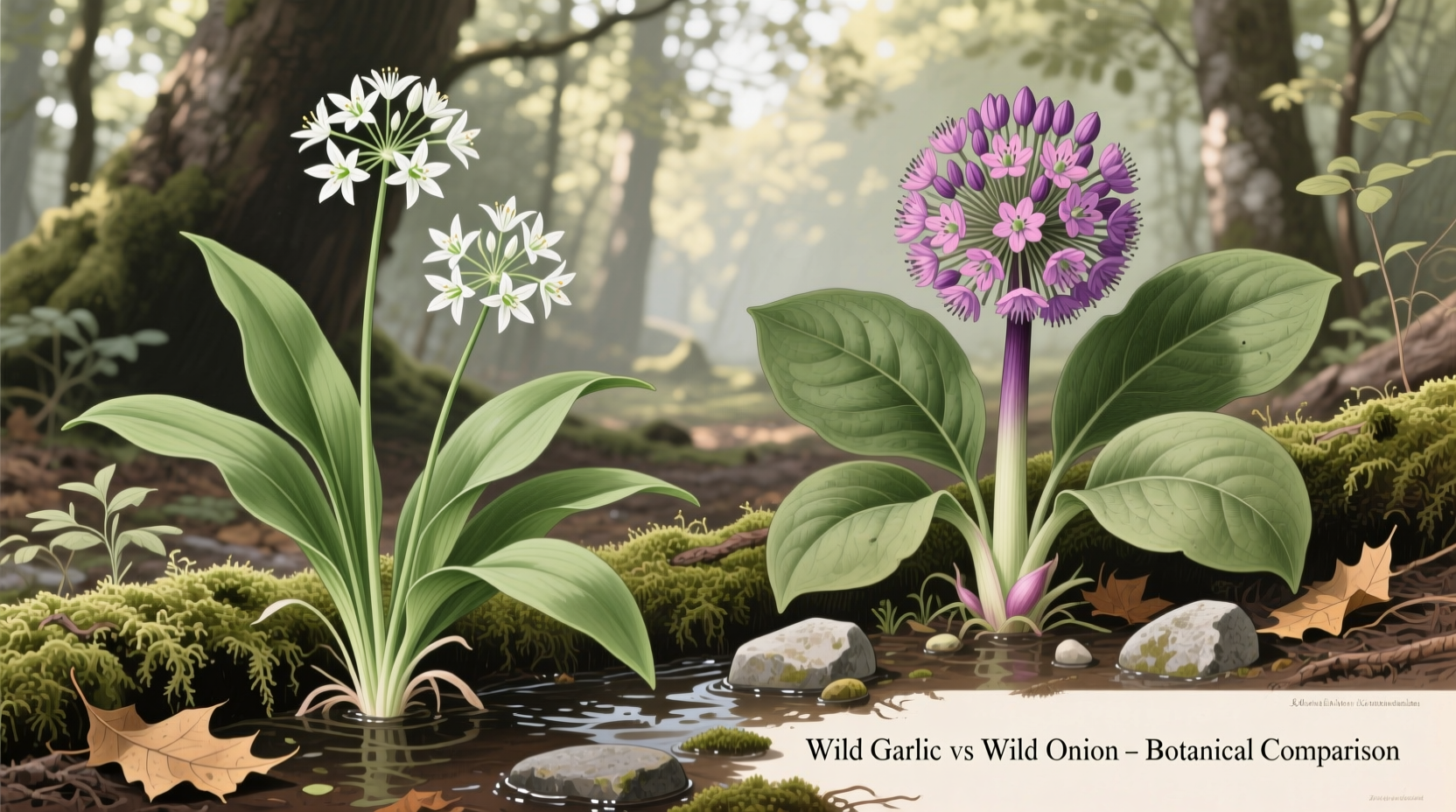Why Proper Identification Matters for Your Safety
Foraging for wild garlic and wild onion offers delicious culinary rewards, but misidentification can have serious consequences. Each year, multiple cases of plant poisoning occur when foragers confuse edible alliums with toxic species. The CDC reports that误食 poisonous plants accounts for approximately 6% of all plant-related emergency room visits annually in the United States. This guide provides scientifically verified identification techniques to keep you safe while enjoying nature's bounty.
Step-by-Step Identification Process
Follow this systematic approach when identifying potential wild garlic or wild onion plants in their natural habitat. Never consume any wild plant without completing all verification steps.
1. The Crush Test: Your First Line of Defense
The most reliable immediate test involves crushing a small portion of the leaf:
- Wild garlic: Releases a strong, unmistakable garlic aroma within seconds
- Wild onion: Produces a classic onion scent, sometimes with a slight garlic undertone
- Dangerous look-alikes: Lily of the valley and autumn crocus emit no allium scent whatsoever
| Identification Feature | Wild Garlic | Wild Onion | High-Risk Look-Alikes |
|---|---|---|---|
| Leaf Structure | Broad, flat, solid leaves (15-20cm long) | Hollow, cylindrical leaves (like chives) | Lily of valley: Paired, elliptical leaves |
| Scent Test Result | Strong garlic aroma | Distinct onion scent | No allium scent (lily of valley has none) |
| Flower Characteristics | White star-shaped flowers in umbels | Pinkish-white spherical flower clusters | Autumn crocus: Purple flowers, no relation to alliums |
| Typical Habitat | Moist deciduous woodlands | Open fields, meadows, disturbed soil | Lily of valley: Shady woodland edges |
2. Visual Verification: Leaf Structure Analysis
Examine the leaf cross-section carefully. Wild garlic leaves are completely solid when cut, while wild onion leaves are characteristically hollow—a key botanical distinction between these Allium species. The USDA Plant Database confirms this structural difference as a reliable identification marker across all growing seasons.

3. Habitat Assessment: Location Context Matters
Consider where you've found the plant:
- Wild garlic thrives in moist, shaded deciduous forests, often forming dense carpets beneath trees. It's particularly common in European woodlands but has spread to suitable habitats across North America.
- Wild onion prefers open, sunny areas like meadows, fields, and disturbed soil near human habitation. The University of Minnesota Extension Service notes these typically appear in drier conditions than their forest-dwelling garlic cousins.
Seasonal Availability and Harvesting Best Practices
Timing significantly impacts both flavor and safety:
Optimal Foraging Windows
- Wild garlic: Peak season runs from early spring (March-April) through early summer. Harvest when leaves are young and vibrant green for the best flavor. The plant loses its culinary value once flowering begins.
- Wild onion: Available from late spring through summer. The bulbs develop full flavor after the plant flowers, typically in June-July.
Sustainable Harvesting Techniques
Practice ethical foraging by following these guidelines from the National Wildlife Federation:
- Never harvest more than 10-15% of any single patch
- Use scissors to cut leaves rather than uprooting entire plants
- Leave flowering specimens to ensure future generations
- Rotate foraging locations annually to prevent overharvesting
Culinary Applications: Transforming Your Harvest
Both plants offer unique culinary properties when properly identified:
Wild Garlic Preparation
Wild garlic's delicate flavor works beautifully in:
- Pesto (substitute for basil)
- Compound butters for grilled meats
- Infused vinegars for salad dressings
- Chopped fresh in potato salads
Pro tip: Freeze leaves in ice cube trays with olive oil for year-round use.
Wild Onion Utilization
Wild onions provide more intense flavor suitable for:
- Pickling (bulbs take on wonderful tanginess)
- Flavor base for soups and stews
- Raw in salsas and fresh salads
- Grilled whole as a side dish
Avoiding Dangerous Confusions: Critical Safety Information
These toxic plants are frequently mistaken for edible alliums:
Lily of the Valley (Convallaria majalis)
This highly toxic plant shares early spring emergence with wild garlic. Key differences:
- No allium scent when crushed
- Leaves grow in pairs from a single stem
- Produces bell-shaped white flowers later in season
- All parts contain cardiac glycosides that can be fatal
Autumn Crocus (Colchicum autumnale)
Especially dangerous as it emerges in fall when some foragers might still be searching for late-season alliums:
- Appears similar to wild garlic when young
- No distinctive allium odor
- Contains colchicine, which causes severe gastrointestinal distress
- FDA warnings note symptoms may not appear for 10-24 hours after ingestion
Expert Verification: When in Doubt, Sit It Out
Reputable foraging organizations like the Wild Food UK emphasize that beginners should:
- Forage with an experienced guide for at least three seasons
- Use multiple identification methods simultaneously
- Consult regional field guides specific to your location
- When uncertain, discard the plant—never gamble with identification
Final Safety Checklist Before Consumption
Before eating any foraged plant, verify ALL these criteria:
- Positive identification through multiple characteristics (not just scent)
- Collection from unpolluted area away from roads and agricultural runoff
- Confirmation that no toxic look-alikes grow in the same location
- Personal tolerance test with small quantity before full consumption











 浙公网安备
33010002000092号
浙公网安备
33010002000092号 浙B2-20120091-4
浙B2-20120091-4